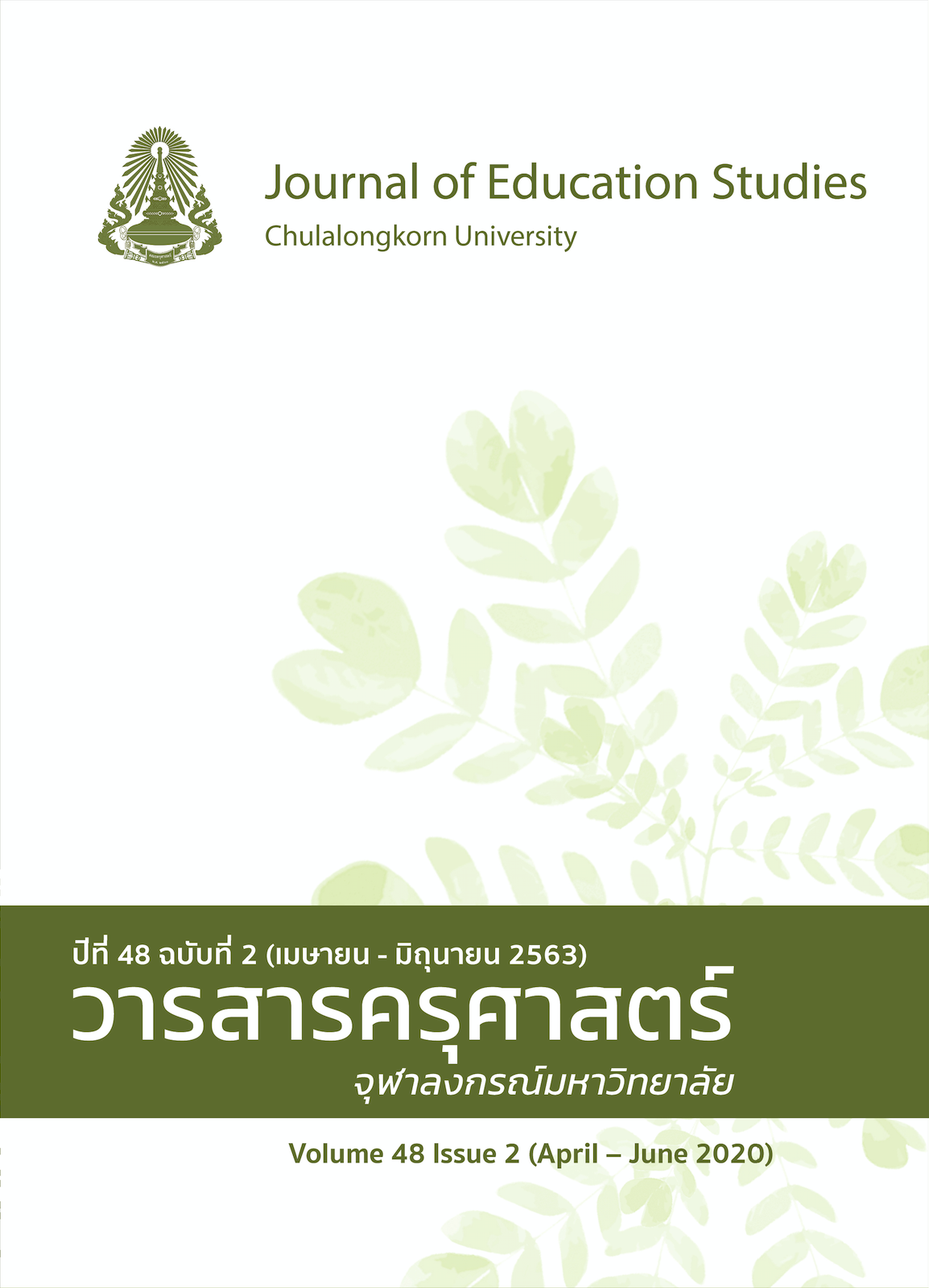Proposal for a Learning Process Using Cognitive Tools in an Infographic Design Approach to Improve Visual Literacy of Undergraduate Art Education Students
Keywords:
cognitive tools, infographic design approach, visual literacy, art education studentsAbstract
This mixed method research aims to propose a learning process using cognitive tools in an infographic design approach to improve visual literacy of undergraduate Art Education students. The study was divided into three phases: 1) surveying opinions of 26 Art Education instructors who were selected by a purposive sampling method, 2) surveying opinions of 172 Art Education students who were selected by a multi-stage sampling method, and 3) studying the infographic design approach from related documents and interviewing five experienced infographic designers who have taught in higher education. These infographic designers were selected by a purposive sampling method. The research instruments were a questionnaire and semi-structured interview form. The results revealed that most instructors and students thought Infographics could be used to improve visual literacy. However, more than half of them had no experience with infographics. Based on the result of literature review, the process of teaching infographic design consists of two steps: learner preparation before design, and creating the infographic. Three activities for learner preparation before the design step are 1) review the Visual Communication theory, 2) practice analysis and interpretation of images or visual media, and 3) compare and evaluate infographic works. The four activities comprising the other step are 1) researching and brainstorming, 2) design, 3) review and revision, and 4) publishing.
References
crashcourseinfographics/
Chow, S. M. (2015, February 18). Infographic Layout cheat sheet: Making the best out of visual arrangement. Piktochart. https://piktochart.com/blog/layout-cheat-sheet-making-the-best-out-of-visual-arrangement/
Hattwig, D., Bussert, K., Medaille, A., & Burgess, J. (2013). Visual literacy standards in higher education: New opportunities for libraries and student learning. Portal: Libraries and the Academy, 13(1), 61-89.
Islamoglu, H., Ay, O., Ilic, U., Mercimek, B., Donmez, P., Kuzu, A., & Odabasi, F. (2015). Infographics: A new competency area for teacher candidates. Journal of Educational Sciences, 10(1), 32-39.
Kaya, M. F. (2012). The determination of the in-class applications of visual literacy and problems faced during these applications with regard to the views of Turkish classroom teachers. Procedia-Social and Behavioral Sciences, 46, 2205-2209.
Krum, R. (2014). Cool infographic: Effective communication with data visualization and design. John Wiley & Sons.
Lankow, J., Josh Ritchie, & Ross Crooks. (2014). Infographics: The power of visual storytelling. John Wiley & Sons.
Lester, P. M. (2014). Visual communication, image with messages. Wadsworth Cengage Learning.
Liyoshi, T., Hannafin, M. J., & Wang, F. (2005). Cognitive tools and student centred learning: Rethinking tools, functions and applications. Educational Media International, 42(4), 281-296.
Matrix, S., & Hodson, J. (2014). Teaching with infographics: Practicing new digital competencies and visual literacies. The Journal of Pedagogic Development, 4(2), 17-27.
McTigue, E. M., & Flowers, A. C. (2011). Science visual literacy: Learners' perceptions and knowledge of diagrams. The Reading Teacher, 64(8), 578-589.
Piksööt, J., Castéra, J., & Sarapuu, T. (2012). Developing Student’s Visual Literacy in a Virtual Modelling Environment. [Paper presentation]. eLearning and Software for Education, "Carol I" National Defence University, Bucharest.
Smiciklas, M. (2012). The power of infographics. Pearson Education.
Stafford, T. (2011). Teaching visual literacy in the primary classroom: Comic books, film, television and picture narratives. Routledge.
Wong, D. (2013). The Wall Street journal guide to information graphics: The dos and don’ts of presenting data, facts, and figures. W.W. Norton & Company.
Yang, H. H. (2013). An integrated approach to developing visual literacy. In S. K. S. Cheung, J. Fong, W. Fong, F. L. Wang, & L. F. Kwok. (Eds.), Lecture notes in computer science: Vol. 8038. Hybrid learning and continuing education (pp. 219-231). Springer-Verlag. https://doi.org/10.1007/978-3-642-39750-9_21
Yeh, H. T., & Cheng, Y. C. (2010). The influence of the instruction of visual design principles on improving pre-service teachers’ visual literacy. Computers & Education, 54(1), 244-252.
Yeh, H., & Lohr, L. (2010). Towards evidence of visual literacy: Assessing pre-service
teachers’ perceptions of instructional visuals. Journal of Visual Literacy, 29(2), 183-197.




